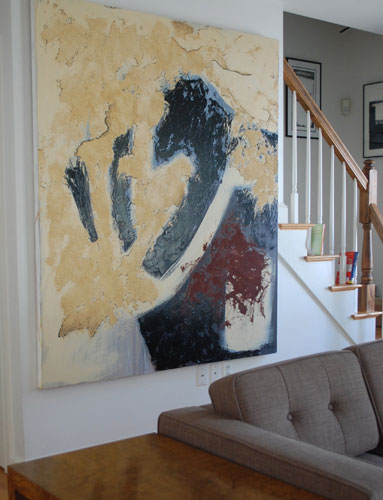
Do you know what is the difference between buying art and collecting art? Buying art is more of a random activity based on likes, preferences or attractions at any given moment, while collecting art is more of a purposeful directed long-term commitment. In both cases, you buy what you like, but if your goal is to collect art and do it right, you have to master two additional skills. The first is being able to effectively research, evaluate and decide whether or not to buy whatever works of art attract you. The second is being able to choose each individual work in such a way as to form a grouping i.e a collection.
Like most people, if you know how to buy art on a piece-by-piece basis, but may not be all that accomplished at making a plan for making multiple acquisitions over time, or in other words, building a collection. You can find art you like just about anywhere you look and in a seemingly endless variety of subject matters, mediums and price ranges, but sifting through it all in a systematic manner can be overwhelming and even intimidating. So how do decide where to focus and what direction to go in? How do you relate one purchase to the next? How do you organize or group your art together in ways that make sense? How do you present it? And most importantly, how do you do all these things well?
Regardless of how you view your collecting, whether serious or recreational, there are techniques you can use to maximize not only the quality and value of your art, but also your own personal enjoyment, appreciation and understanding of that art. Step one is being true to your tastes. This means acknowledging that you like certain types of art regardless of what you think you’re supposed to like or what seems to be the current rage. All great collectors share this trait; that’s one thing makes their collections stand out. When personal tastes and preferences are ignored in favor of the standard norms, one collection begins to look just like the next persons.
Don’t confine yourself to the same galleries. Get out there and see what else is going on at galleries you’ve never been to and so on. Look at art you think might attract you. Don’t be afraid to experiment. A reassessments of your tastes is always a good idea. What excites you today could easily bore you tomorrow . A quality collection is always evolving!.
Regardless of how much you know about what you collect already, always remember that the educational process is an ongoing one. Be an informed buyer. Take every opportunity to discuss the fine points of what you’re looking at with as many different experts, curators, artists, collectors, gallery personnel and other informed art people as possible. Not only does this improve your abilities to separate out the great art from the good from the not so good, but you also learn how to protect yourself against being taken advantage of in the marketplace.
Educate your family about your collection instill a love and respect for what you’ve accumulated all these years. if you expect to have any influence over the long term future of your collection, lay the groundwork beginning right now. Make sure those close to you are aware of your art’s value and significance. Make sure they understand how important it is to you. For assistance or queries on how to build a collection please reach out to the curator at New Louver Art Gallery and we will provide you assistance. Live Art Love Art!